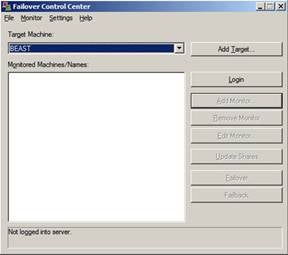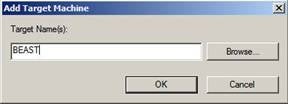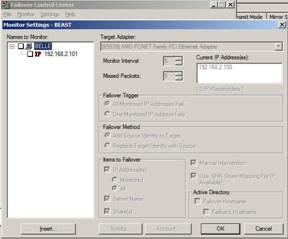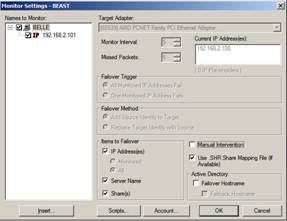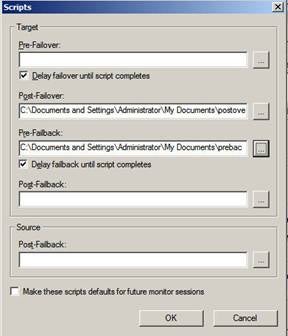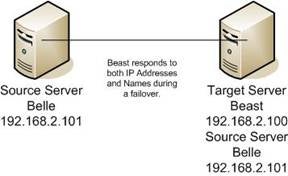In my last article, we discussed how to configure replication
and mirroring of SQL Server data via Double-Take. Once you have properly
configured your replication sets, you can configure failover and begin
monitoring and testing. In this article, we will discuss how to configure and
test a Failover in action.
Prerequisites
Before configuring failover, you will need to configure a
set of batch files called Postover.bat and Preback.bat. These batch files start
and stop SQL Server during a failover. You can download the
scripts from NSIsoftware’s web site or create the batch files as shown below in
Figure A.
Postover.bat
net start “Distributed Transaction Coordinator”
net start “Message Queuing”
net start “MSSQLServer”
net start “SQLServerAgent”Preback.bat
net stop “Distributed Transaction Coordinator”
net stop “Message Queuing”
net stop “MSSQLServer”
net stop “SQLServerAgent”
Configuring your Failover
In order to configure your failover, choose Start | Programs
| Double-Take| Failover Control Center and the following screen appears in
Figure A.
Figure A.
You can either choose the Target machine from the dropdown
or click on Add Target and type the machine name as shown in Figure B.
Note: For the purposes of this
article, Beast (192.168.2.100) is the Target server and Belle (192.168.2.101)
is the Source server.
Figure B.
Next, click the Login button and
choose Add Monitor. On this window, type the name of the Source (BELLE) server
and click OK (Figure C.) The name of the server and IP address appears in the
left hand column and allows you to place a checkmark in the box as shown in
Figure D.
Figure C.
Figure D.
On this window, you can select your
failover to be Automatic or Manual. Secondly, you can also decide what items
you want to failover. Once you have chosen your options, click Scripts. This is
where you will attach your postover and preback batch file scripts. In the event
of a failover, the scripts will shut down the specific services and start them
on the Target server. When a failback occurs, it will do the opposite. Without
attaching these scripts, this functionality will not work. (Figure E.) Click OK
twice and your two SQL Servers are now being monitored as shown in Figure F.
Figure E.
Figure F.
When a failover occurs on the Source
machine, your target machine will begin to process the requests for both
machine names and IP addresses as shown in Figure G.
Figure G.


